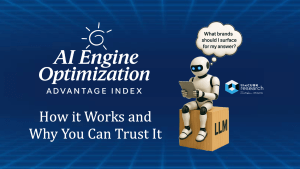Premise
Today’s AI startups are overly reliant on public clouds and risk missing the opportunity to bring AI to data that resides on-premises. Organizations increasingly want to bring intelligence to their proprietary data that resides on-prem, to do training and inference under their own control. Startups’ primary route to market is either through hyperscaler marketplaces, which typically de-emphasize on-prem deployments, or via direct sources. When going direct, startups lack the credibility and go to market breadth to scale efficiently. As such we believe an opportunity exists for startups to partner with infrastructure leaders that have a strong on-premises installed base and both the talent and go to market expertise to penetrate traditional enterprises.
On-Premises AI Adoption Lags
Enterprises today increasingly recognize the need to bring AI to the data – running training and inference on-premises rather than in public clouds. Industries like finance, healthcare and defense have found off-site models “less appealing – or outright off-limits” due to data gravity, sovereignty and latency concerns. Yet for reasons of convenience and simplicity, many companies still default to cloud for AI experimentation. At the same time, hybrid approaches are rising: about 45% of IT leaders now weigh on-prem and cloud equally for new GenAI projects. This tension reflects a transition period– cloud is easy to spin up, but on-prem offers control.
Growing evidence suggests enterprises will slowly but steadily shift AI workloads back on-site. Dell’s recent AI server orders hit a record, and HPE’s AI revenue rose 16% year-over-year. The logic is simple– moving compute to the data can cut latency, reduce egress fees, and satisfy data regulations, without the expense and complexity of moving large data sets. “The Dell AI Factory brings AI as close as possible to where data resides,” the company emphasizes – literally embedding AI into private datacenter racks. In short, enterprises are preparing to run serious AI on-prem (or in colos) alongside the cloud.
Yet startups often find themselves on the sidelines of this on-prem AI wave. Building for on-site datacenters raises daunting hurdles – financial, technical and organizational – that few young companies can clear easily. Key barriers include:
- Capital and Hardware Costs: AI infrastructure is expensive. A single Nvidia A100 GPU (the workhorse of modern training clusters) costs on the order of $8–10K (40GB PCIe) up to $18–20K (80GB SXM). Equipping even a modest on-prem cluster can run into hundreds of thousands of dollars. To put it in perspective, training a large model can cost millions: OpenAI’s GPT-3 consumed 1,287 MWh of compute ($3.2M worth at typical on-demand rates) and generated ~552 tons of CO₂. GPT-4 reportedly cost over $100M to train. These figures underscore why large players built massive cloud GPU farms and why startups struggle to match that on-prem capex without deep pockets.
- Technical Complexity: Deploying AI on-prem isn’t just “buy a server.” Startups must integrate specialized GPU servers (often liquid-cooled), high-speed networking, storage, and AI software stacks in a non-cloud environment. As one analysis notes, running AI at scale in-house involves “specialized software stacks [and] data engineering pipelines,” demanding expertise that many organizations – let alone nascent startups – lack. Recruiting engineers who understand everything from cluster orchestration to ML model optimization is a tall order. In short, the operational effort to spin up, tune and maintain an on-prem AI factory is vastly higher than launching a cloud-based prototype.
- Data Management and Compliance: AI thrives on data, but enterprise data is often siloed and sensitive. Consolidating proprietary datasets for on-prem AI requires heavy data engineering work. Furthermore, compliance is critical: an IDC survey found 71% of companies have compliance, security or privacy requirements for AI. On-premises clusters help meet these needs (data never leaves the company), but they also impose burdens: logging, access controls, and audits must be handled internally. Gartner even observes that “privacy and protection are primary motivations to keep models on-premises” – yet satisfying those requirements means extra design and cost.
- Scalability and Energy: Training large models on-prem means more than hardware purchase. AI clusters draw enormous power and cooling. (Training GPT-3 alone burned ~1.3 GWh – enough to power 120 U.S. homes for a year.) As usage grows, the electrical bill and datacenter space grow too. Many startups underestimate these operational expenses. Unlike cloud (where you rent what you need), on-prem scaling requires sizable upfront infrastructure or painful forklift upgrades. Poorly managed growth can choke startups: data-center expansion and energy costs can negate any hardware cost-savings.
- Leadership & ROI Challenges: Finally, securing executive buy-in for on-prem AI is an uphill battle. Enterprises often fund AI by carving budget out of existing projects – a blunt strategy that raises accountability. In a recent ETR survey, 44% of respondents admitted they “stole” funds from other IT budgets to pay for generative AI (rising to 55% among Global 2000 firms). Startups must therefore prove value fast. As theCUBE research put it, companies “worry about dedicating substantial capital” to on-prem AI without a clear business casethecuberesearch.com. Uncertainty over ROI leaves many pilots trapped in “cloud-only” phases. Unless a startup can demonstrate near-term payback (e.g. compliance wins, cost savings or new revenue), CIOs will default to off-prem models.
Taken together, these hurdles explain why on-prem AI adoption has lagged– it’s one thing to experiment in the cloud, and quite another to deploy and operate at scale inside a corporate datacenter, at scale. As theCUBE Research shows, making AI stick on-prem “requires a well-structured roadmap, skilled talent, budget commitment, clear value and the right organizational culture” – a tall order even for large enterprises.
Partnering with On-Prem Infrastructure Leaders
For AI startups, a strategic way forward is collaboration with established on-prem vendors. Industry stalwarts like Dell, HPE, IBM, Oracle and SAP are aggressively integrating AI into their platforms and services. By aligning with these players, startups can leverage existing sales channels, engineering support and hybrid deployment frameworks. For example, Dell’s AI Factory initiative bundles Dell servers with NVIDIA GPUs and software to “provide an easy button” for on-prem AI. But the solution is still hardware-centric and lacks the rich ecosystem of innovators and startups found in the public cloud. Industry pundits point out that “better software from startups… and packaged infrastructure from vendors such as HPE and Dell could make private data centers a way to balance cloud costs.”. In practice, this could mean an AI startup pre-validates its toolchain on HPE GreenLake or joins IBM’s partner program to embed solutions in existing datacenter stacks. The vendor endorsement accelerates enterprise proof-of-concept and may secure joint marketing or financing.
Moreover, partnerships help surmount technical hurdles. An established vendor can offer managed services (e.g. GPU-as-a-Service) or turnkey solutions that mask complexity. Dell APEX, HPE GreenLake and similar on-prem consumption models allow startups to sell software without requiring the customer to buy a full cluster outright. Working together, startup and OEMs can co-innovate integration (for example, optimizing a model for Dell’s hardware) and tap shared R&D resources. Such alliances also lend credibility: CIOs trust “on-prem leaders,” making them more likely to pilot new AI tools certified by those brands.
The Hybrid AI Future: A Massive Opportunity
The AI infrastructure landscape is rapidly evolving toward a hybrid model. Experts predict that a large portion of AI workloads will reside on-premises or in colocation centers, especially inference and specialized training that demand data locality. Gartner and IDC forecasts – though often gated – foresee significant enterprise investment in private AI clusters. Already, IDC data notes companies are moving to on-prem deployment for better integration with data repositories and security.
For startups, this means a looming opportunity– firms that can bridge the gap between cloud and on-prem AI will command a premium. Those who solve the capex problem (perhaps via GPU sharing or more efficient chips), streamline data operations, and bake compliance into their offerings will find a receptive audience. As Elsa Olivetti of MIT points out, data centers’ power demands are surging and must be managed – startups that offer energy- and cost-efficient AI solutions will win support. Likewise, as enterprises spin up “AI Centers of Excellence,” they’ll seek partners – be they independent software vendors or strategic alliances – to help deploy AI at scale internally.
In short, the hybrid AI era is coming, and it will value on-prem skills and partnerships. Startups that learn to “bring AI to the data” in a compliant, cost-effective way will not only enter the enterprise AI market – they could help define it.



